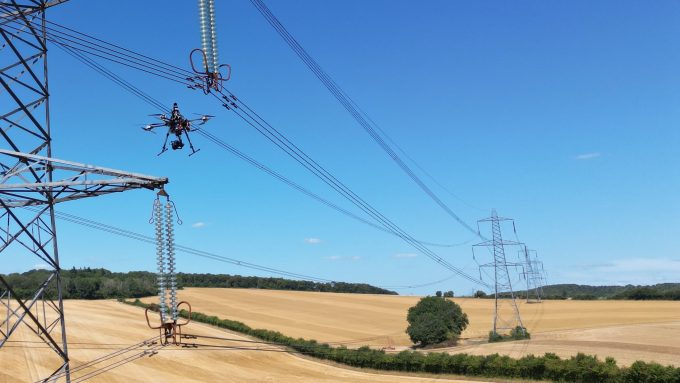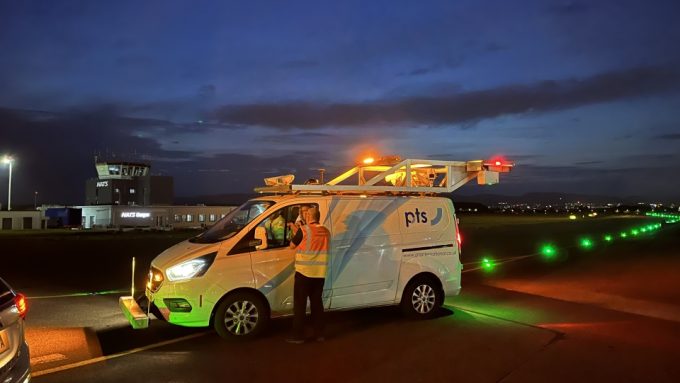
Vive la drones and electric aircraft revolution

This new technology will account for a significant share of future aviation markets and the UK is keen to accelerate development of drones and electric aircraft, as well as supporting infrastructure and services. Driving this innovation towards net zero are programmes such as FlyZero, the Government’s Jet Zero, strategy, plus the UKRI Future Flight Challenge, which is investing up to £125M, matched by £175M more from industry.
Net zero to Jet Zero
The UK is in the vanguard of the green aircraft business. Back in June 2020, Transport Secretary, Grant Shapps had already announced the creation of the Jet Zero Council, responsible for making net zero carbon emissions a reality for all flights in the future.
One month later, the Aerospace Technology Institute (ATI) launched FlyZero. Backed by the UK Government’s Department for Business, Energy & Industrial Strategy (BEIS), it brings together expertise from across the industrial supply base and academia. Its vision is for the UK to realise zero-carbon emission commercial flight by the end of the decade,
Launched by Connected Places Catapult, the Future Air Mobility Innovation Centre gives this rapidly emerging sector a much-needed focus for R&D, also investors and funders. The Centre aims to position the UK at the forefront of research, development and use, with a focus not just on the aircraft, but the entire aviation ecosystem – every link in the chain.
Small in size, big in benefit
Drones might be small, but their influence is big and their potential huge. Originally developed for military purposes, drones have grown greatly in importance and application, as battery and control technologies have developed and miniaturised this century.
As the tech has advanced, performance has gone up and costs have come down. Seen as the new green workhorse of business, an all-electric drone is a zero-emission flying machine, with its rise driving the sustainability agenda throughout aviation.
In the forefront of this revolution, Connected Places Catapult leads the UK Government’s Drone Demonstration and Development Pathfinder. This initiative explores and develops safe UK deployment of drones Beyond Visual Line of Sight (BVLOS); as well as use and business cases for drones across industry sectors, regionally and nationally.
Use cases vary from search and rescue operations, via parcel delivery, to work in media, agriculture, wildlife protection, environmental monitoring, infrastructure maintenance, even tree planting. The combination of green credentials, cost savings and safety benefits are stimulating rising numbers of new enquiries for applications across multiple industries.
Framework for sustainable growth
Rapid market growth also feeds demand for supporting infrastructure. In anticipation, Connected Places Catapult is leading development of the Open-Access Unmanned Traffic Management (UTM) framework, alongside the UK Department for Transport and industry.
The job of developing, building and testing the UTM framework is key to UK growth plans. Adoption of a UTM system, integrated with the entire air traffic network, will provide a more energy- and cost-efficient, greener and safer process for managing UK airspace.
Green skies of the future
Looking ahead and up, low- to zero-emission electric aircraft, such as eVTOL (electric vertical take-off and landing) and multicopters – drones with multiple rotors – will become a common sight in future, increasing accessibility countrywide, especially in outlying regions.
Innovative UK companies leading this electric charge include:
- Bristol-based Vertical Aerospace, which is collaborating with global players such as Honeywell to develop a certified all-electric winged vertical take-off and landing aircraft;
- VRCO, which is developing what is calls a hyperluxury supercar of the skies, with its Airvolution eVTOL programme at Infinity Park Derby; and
- SAMAD Aerospace, a tech start-up on Cranfield Technology Park, which is working on civil aviation projects, such as the world’s first hybrid electric business jet.
Overall, it is expected drones and electric aircraft will more than halve the operating costs of conventional combustion engine flights. This gives them a long-term cost advantage on short regional routes with limited passenger bases, plus makes drones versatile and suited to niche applications like delivering vital medicines to remote areas.





